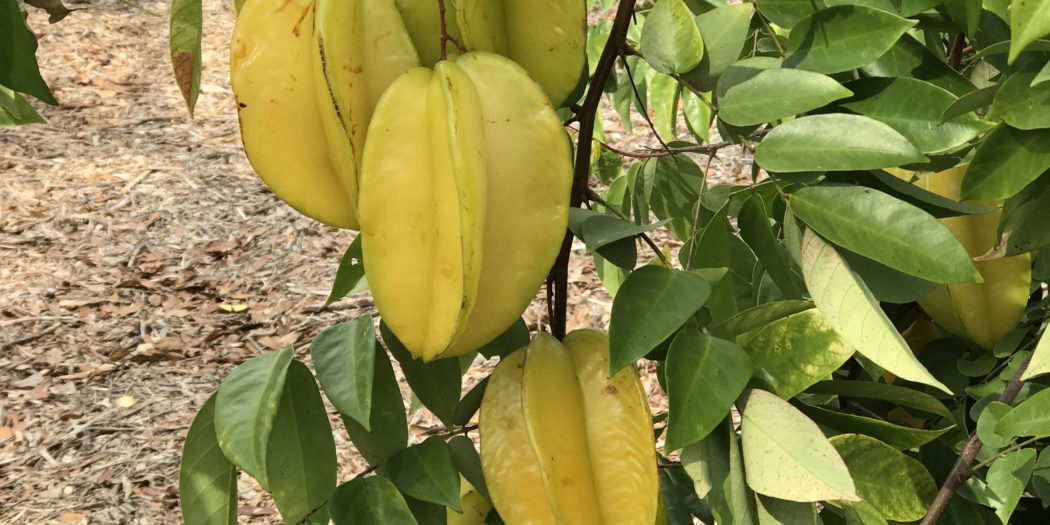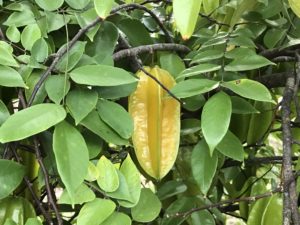
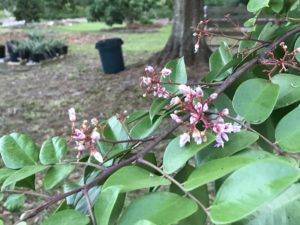
Carambola, or starfruit as it’s often called, is a fine fruit for the home grower, provided that one starts with a grafted top-quality variety— a Kary, Fwang Tung, Sri Kembangen, the local variety Pine Island Gold, or some other sweet cultivar. Fruiting throughout the second half of the year, it’s a delightful, mild-flavored sweet treat, alone or in a fruit salad. It dehydrates very well.
The carambola tree is a beautiful, medium-sized evergreen with a weeping habit, and a small pink flower. Famously productive, it’s one of the few species that fruit well in part shade, indeed a bit of afternoon shade is probably beneficial. It does not hold up well to high winds, but apart from that it makes an outstanding, edible landscape tree.
The fruit is a somewhat high in oxalic acid, so should be avoided by those with kidney or gallstone problems. Most of the oxalic acid is in the ridges of the oddly shaped fruit, which should be removed before eating. It also contains a small amount of a toxin, caramboxin, which is an amino acid similar to phenylalanine. It’s quickly eliminated from the body by people with normal kidney function, but it can accumulate for those with a history of kidney disease, who should avoid starfruit altogether. And just to be safe, no one should eat massive amounts of carambola, or use it for juicing.
Carambola does not sweeten once picked, although at room temperature the fruit will soften and become more yellow or orange, depending on its variety.
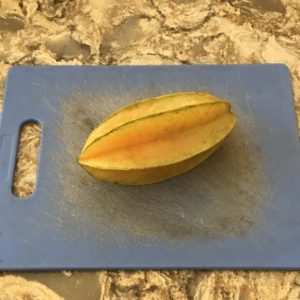
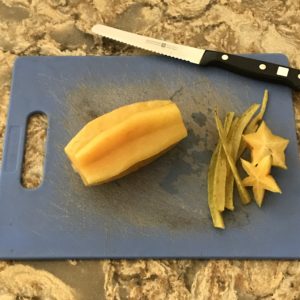
 The top varieties have rather few seeds, concentrated along the central axis of the fruit. Although the fruit can be sliced crosswise to make decorative stars for salads, it’s much easier to cut off the ends and edges, then cut the fruit lengthwise into five or six long sections, and cut off the core with the seeds from each section.
The top varieties have rather few seeds, concentrated along the central axis of the fruit. Although the fruit can be sliced crosswise to make decorative stars for salads, it’s much easier to cut off the ends and edges, then cut the fruit lengthwise into five or six long sections, and cut off the core with the seeds from each section.
At SweetSong Groves, we have six starfruit trees, NW-G-1 (Kary), NW-G-2 (Fwang Tung), NW-C-8 (Fwang Tung), SW-H-1 (Lara), EG-E-0 (Pine Island Gold), and EG-G-1 (Fwang Tung). Watch for this excellent fruit from SweetSong.
 SweetSong Groves LLC Tropical and subtropical fruit, ecologically grown on Florida's Suncoast
SweetSong Groves LLC Tropical and subtropical fruit, ecologically grown on Florida's Suncoast 